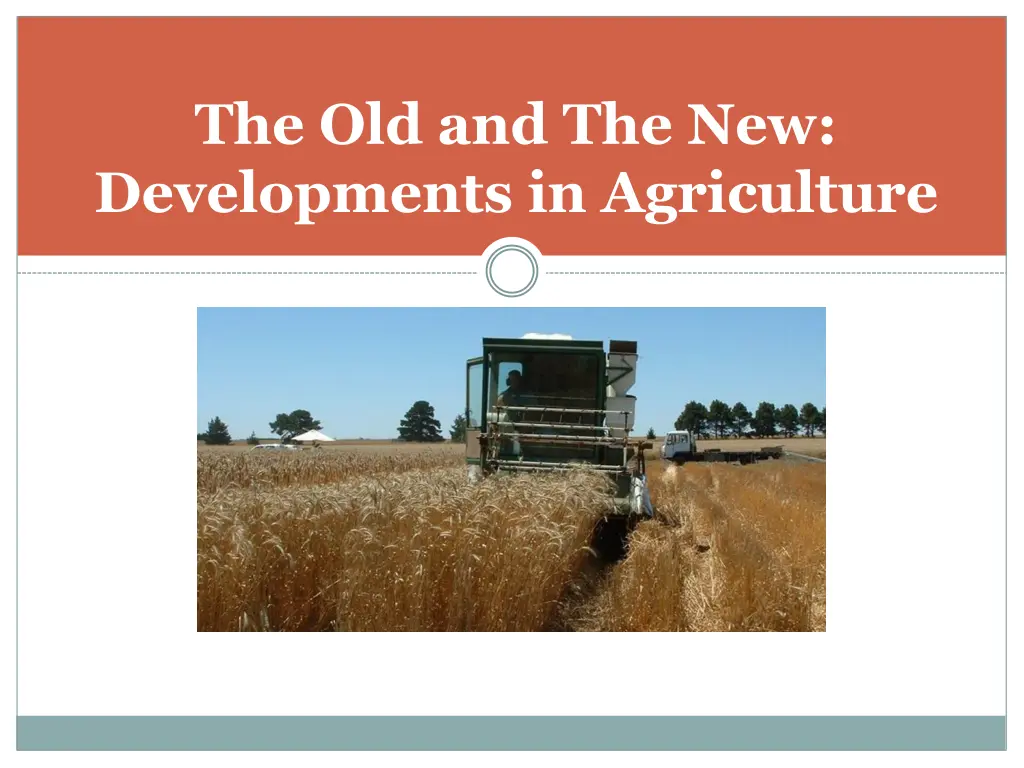
Evolution of Agriculture Implements
Explore the gradual developments in agriculture from manual sickles to modern mechanical reapers, revolutionizing grain harvesting techniques. Understand the transition from traditional methods to mechanized farming practices.
Download Presentation

Please find below an Image/Link to download the presentation.
The content on the website is provided AS IS for your information and personal use only. It may not be sold, licensed, or shared on other websites without obtaining consent from the author. If you encounter any issues during the download, it is possible that the publisher has removed the file from their server.
You are allowed to download the files provided on this website for personal or commercial use, subject to the condition that they are used lawfully. All files are the property of their respective owners.
The content on the website is provided AS IS for your information and personal use only. It may not be sold, licensed, or shared on other websites without obtaining consent from the author.
E N D
Presentation Transcript
The Old and The New: Developments in Agriculture
Developments in Agriculture Developments in agriculture have generally been gradual and steady, one change leading to another, or at least making another possible. The evolution of grain cutting implements and practices is one example of such an evolution and is illustrated on the next slides.
Sickle The early farmer cut grain manually with a sickle. Then he gathered it into bundles and stood it in stooks to dry. Stooks were gathered when the grain was dry and taken to the threshing floor.
Scythe A larger blade and a longer handle on the cutting tool allowed the farmer to cut a larger swath of grain in one sweep. As well, the addition of a cradle to this scythe allowed the farmer to cut bundles of grain, not just individual stalks. These would be hand-tied and stoked to allow for field drying before threshing.
Mechanical Reaper Mechanization of the cutting knife (reciprocating knife) and addition of a cradle reel resulted in a reaper that speeded up the cutting and saved energy for the farmer.
Reaper- Binder The need to bundle the cut grain encouraged the refinement of the reaper to incorporate a binding capacity. The binder eliminated the labor required to tie grain bundles by hand and thus made stoking faster and easier.
Hopper Farm Today grain is no longer bundled and stoked. Ripe grain can be cut and threshed by a combine which gathers the seeds into its huge hopper and leaves the straw on the field where it can be plowed under.
Final Words Those kinds of threshing is made possible not only by the development of the combine, which can both cut and thresh, but also by the development of new varieties of grain that are hardy enough to resist the forces of wind and rain and remain standing until they are ripe. Now, put your agricultural knowledge about the developments in agriculture by answering the questions in the classwork section in this platform. Thank you and have fun with the worksheet!
